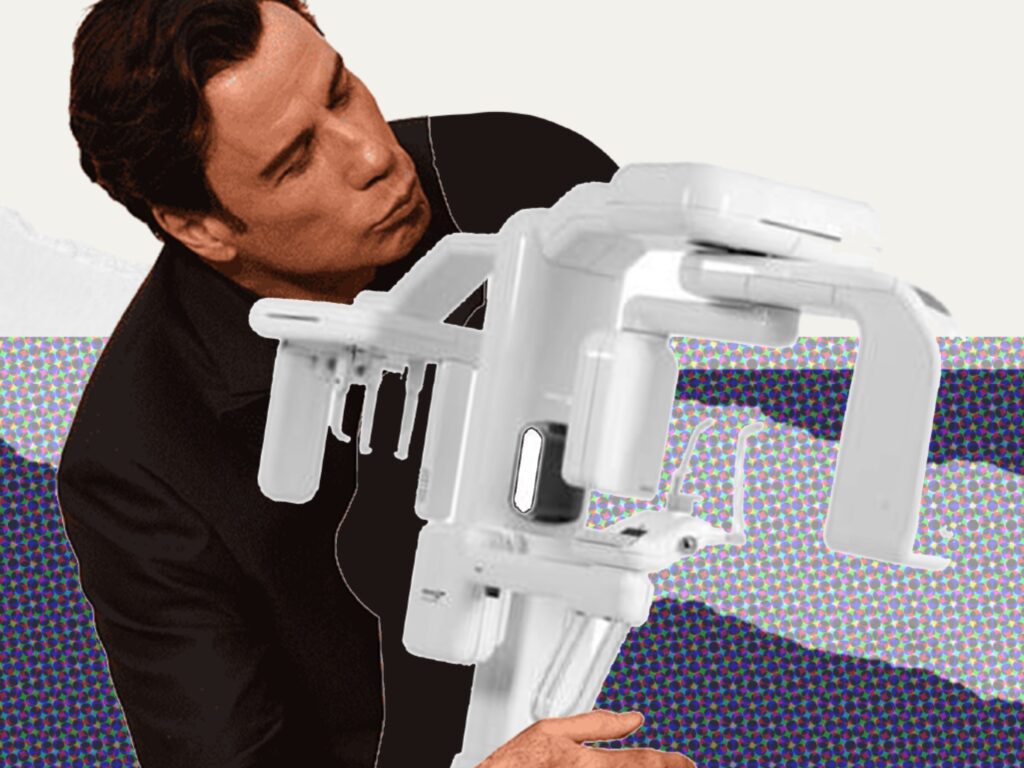By Winston Wolf
Does this sound familiar? A patient comes in with vague dental pain or sensitivity. You have a look around the mouth, and all looks fine. Your dental instinct is telling you something is wrong, but you can’t put your finger on it. Probably a bit of grinding, right?
Don’t worry, the Wolf is here, and I solve problems and can help you.

The Problem: A Crack in the System
Cracked teeth are deceptive. Early presentations have subtle, sometimes vague symptoms and can often produce inconsistent clinical testing results. You tap, you probe, but no joy. Patients can’t pinpoint the tooth, sometimes unsure if it is an upper or lower tooth that’s causing the fuss. Radiographs offer no clues, just healthy teeth staring back at you.
You send the patient away and they keep coming back until a pulp blows or the poor tooth splits in two. This isn’t amateur hour. If you’re going to diagnose a crack, you need to know what you’re doing.
Patient History: The Tells Are Always There
“If you’re talking, you’re not listening.” So keep quiet, ask the right questions, and let the patient tell you the answer.
You don’t jump into treatment without listening first. The story is where the truth begins. Here’s what you’ll hear if you know what to ask:
Common Features in the Patient’s History:
- Pain on chewing, especially hard foods
Usually described as a “sharp” or “brief” pain. Not throbbing. Not lingering. - Pain on release (after biting)
This is the smoking gun. They bite, they’re fine — they let go, it hurts. - Sensitivity to cold
Often inconsistent. Sometimes transient, sometimes persistent. No clear pattern and depends on the pulpal status. - No pain when not chewing
At rest, they feel nothing. But give them a bread crust or granola bar, and the drama begins. - Vague or shifting pain location
Patient might say, “It’s this one… or maybe the one behind it.” Cracks don’t like to reveal their hiding place. - History of clenching or grinding
A history of clenching or grinding? That’s a red flag. Patients won’t always confess — but the wear patterns on their teeth will. Bruxism increases occlusal forces, turning already stressed teeth into prime candidates for cracks. But tread carefully, “Just because it’s easy doesn’t mean it’s right.” It’s tempting to blame parafunction for every vague symptom. Don’t. The grinding may be the cause, but the crack is the consequence — and the real source of the pain.
Diagnostics: Tools, Not Toys
“Just because you are a character doesn’t mean you have character.” Same goes for tools. Know what to use and how to use them — or don’t bother.
- Transillumination
Shine light through the tooth, your trusted curing light does this well. Observe for any interruption in the transmission of the light.
- Bite Testing
Tooth Sleuth™, cotton roll, doesn’t matter. Patient bites, releases — that jolt of pain tells you what you need to know. Remember that smoking gun.
- Magnification
You’re not going to see fine structural damage with naked eyes. Use loupes. Better yet, use a microscope. Precision matters, and magnification and illumination are what make you stand out from the average shmo.
- CBCT
Will you see the crack? Probably not. But you may see periapical changes if the pulp’s been compromised. Standard radiographs? Usually inconclusive. Cracks like to stay off the radar but don’t dismiss them outright — check the crestal bone levels, particularly in the axial view. A subcrestal crack can trigger vertical bone loss that gives the game away, hidden intrabony defects, and isolated bone loss, are subtle signs that something’s wrong beneath the surface. This can give you an idea of the extent of the fracture and help determine the likely prognosis for treatment.
- Staining
If transillumination fails and you’re still suspicious, use a dye. A fine crack will take it up. No drama, just data.
Classification: Know What You’re Dealing With
Treatment: Execute the Plan
“If I’m curt with you, it’s because time is a factor. “So let’s get it right the first time.
First Principles:
When dealing with cracked teeth, the objective is simple:
- Stabilise the crack
- Prevent further bacterial leakage
- Preserve pulp vitality — if at all possible
You go with the least invasive, most effective option that gets the job done. Over-treat and you lose the tooth. Under-treat and you risk failure. It’s a balancing act — so act like a professional.
- Full-Coverage Crown
If the pulp is healthy and the crack hasn’t run deep, cover it. No half measures, go full coverage to provide as much bracing for the crack as possible. It is always prudent to have an extended provisional restoration period to allow for the assessment of the pulp response and vitality. To avoid the need for cutting access cavities through beautiful new crowns, ensure the patient is comfortable and the pulp has survived before cementing the final restoration.
- Root Canal Treatment + Crown
When the pulp is non-vital or irreversibly inflamed, carry out root canal treatment first, then crown it. No half-measures. Remember to protect the tooth from the occlusion after the root treatment and before crown preparation. Ideally prepare the tooth for a temporary crown at the same visit to avoid those distressing interappointment catastrophic breakages.
“Let’s not start sucking each other’s lollipops just yet.” Root canal treatment isn’t a miracle — it’s a risk-managed move. Prognosis depends on how far the crack runs. Be straight with the patient. Always.

Prognosis: Plan Like a Professional
- Craze lines – Excellent
- Cracked cusp – Good
- Cracked tooth – Variable; guarded to poor depending on extent
- Split tooth – Hopeless
- Remember occlusal loads matter, and adjunctive splint therapy may be indicated.
- Extraction
Split tooth? Extensive vertical root fracture? That tooth is done. Don’t delay. Remove it, explain the next steps, and get on with the prosthetic plan.
Final Word
Be the Professional in the Room. Be upfront. Manage expectations. Never promise what you can’t deliver. Be smart. Be measured. Be fast.
That’s how you handle cracked teeth — the Wolf way.
